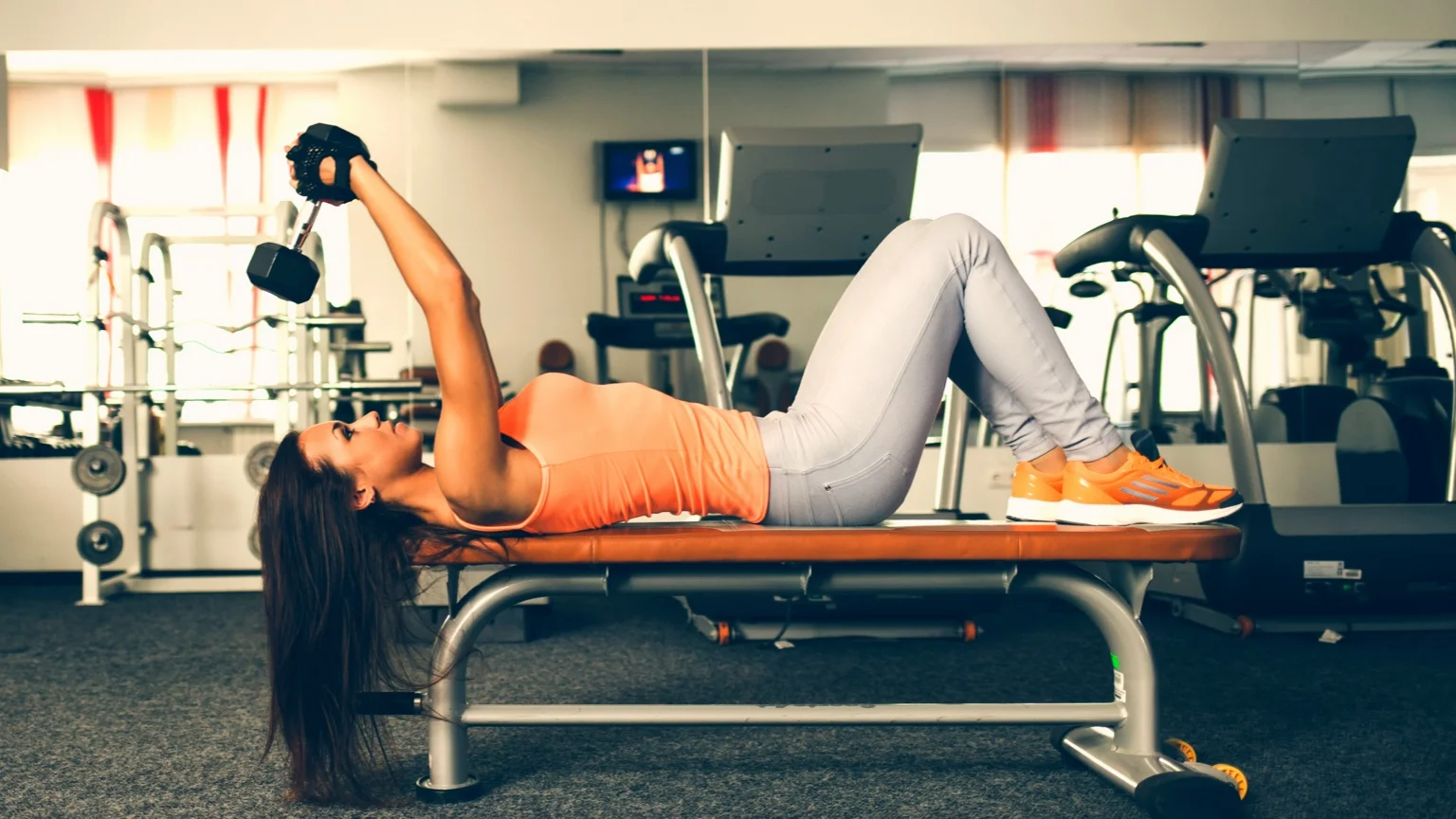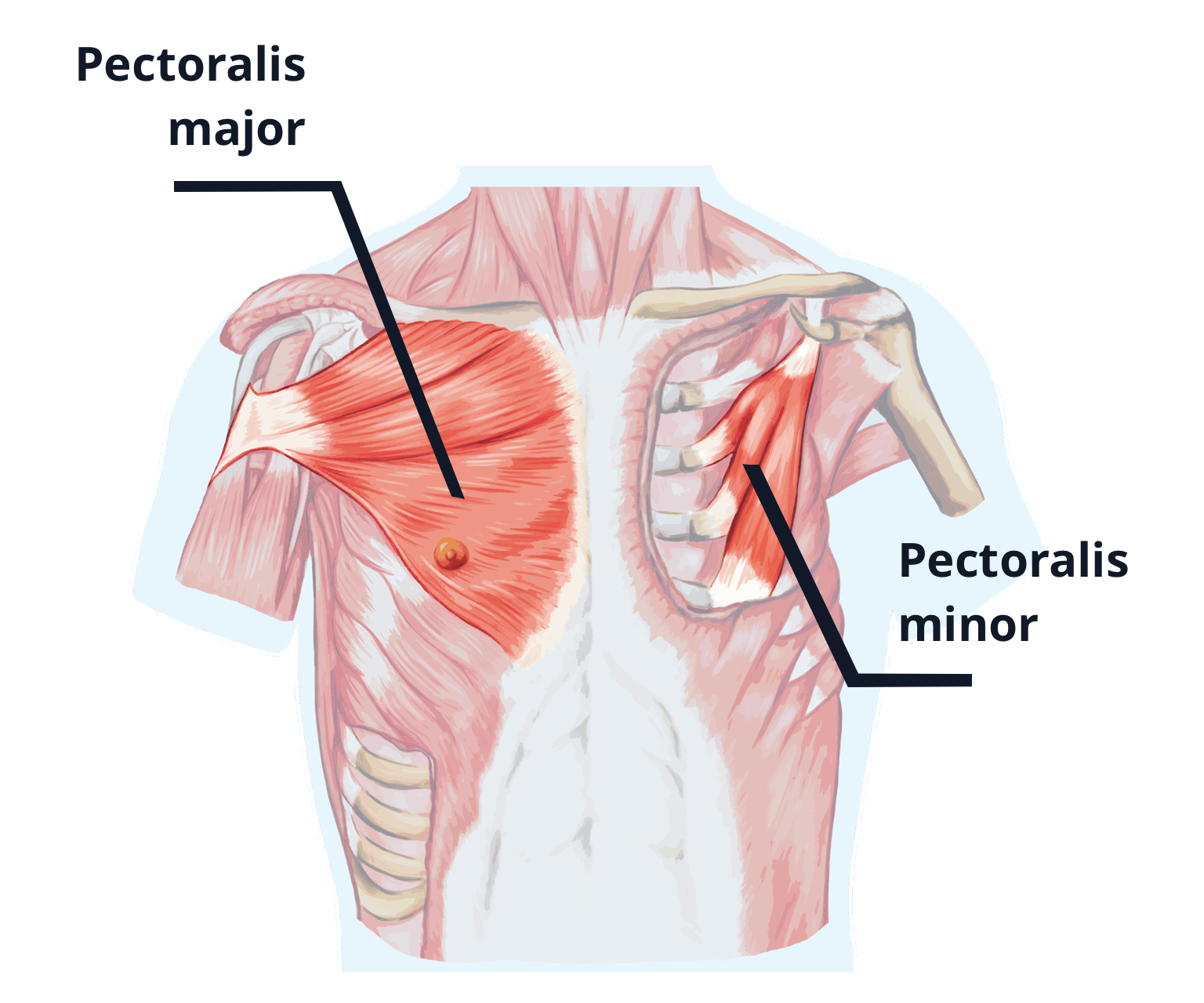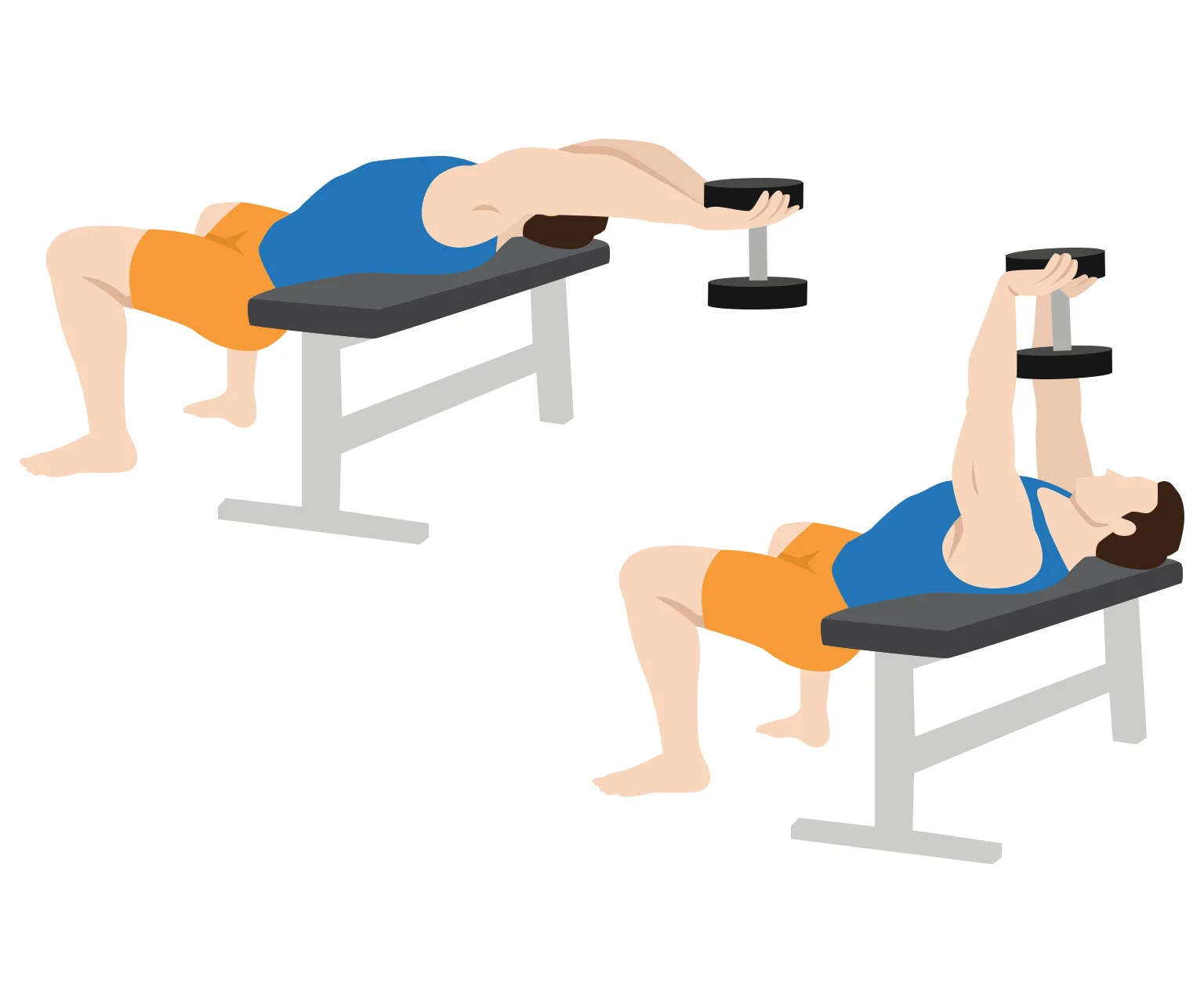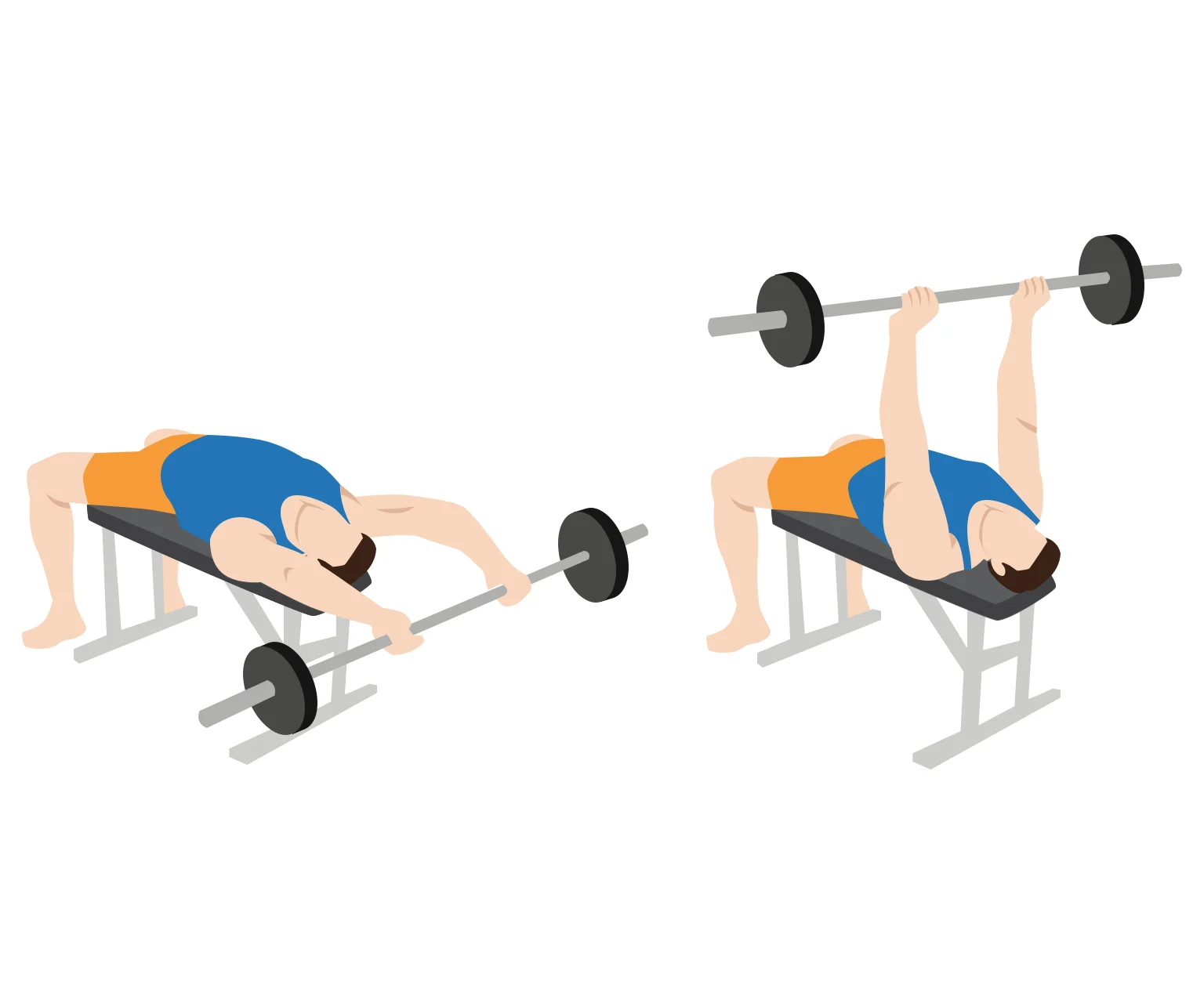How to Do Dumbbell Pullovers and Barbell Pullovers

The dumbbell pullover sees you, while lying with your back on a bench, moving a dumbbell in an arc-like motion over your head and towards the floor. It primarily targets your pectorals (chest muscles) and your latissimus dorsi (lats) in your back.
Jump to
Training your chest and back at the same time
Many compound and isolation exercises work either your chest and shoulders or your back muscles.
The bench press and cable crossover, for example, primarily work your chest muscles but do not engage your lats. And bent over rows and lat pulldowns primarily work your lats, but not your chest.
Dumbbell pullovers are fairly unique because they can engage your pecs and your lats in one movement. In workout routines where you train chest and back together, like the 6 day Arnold split, this can be an efficient, compound exercise to include.
Muscles worked
Chest muscles
The pectoral muscles, commonly known as “pecs”, are the muscles located in your chest area. They are made up of two parts:
- Pectoralis major – This is the larger of the two muscles, and is the most visible muscle in your chest. It is fan-shaped and stretches from your collarbone and sternum to the humerus in your upper arms. It’s responsible for movements like pushing and pressing.
- Pectoralis minor – This is the thin, flat muscle that’s located beneath your pectoralis major muscles. It stretches from your ribs to your scapula. It plays a key role in the movement and stabilization of your shoulder blades.

Dumbbell and barbell pullovers target your pecs as a primary muscle. If you want, you can put more emphasis on your pecs by flaring out your elbows slightly. It's important to not flare out too far so you can keep control of the weight and maintain the proper form.
Lats
Your latissimus dorsi (lats) are large muscles that run along the sides of your middle-to-lower back. This is the largest muscle in your back and gives your back its distinctive V-shape.

Lats play a key role in pulling your arms down when extended above your head. Strong lats help with everyday activities and exercises like swimming and pull ups.
Keeping your elbows close to your body through the entire movement will ensure that pullovers hit your lats effectively. To turn this into more of a lats exercise, you can also perform the movement on an incline bench.
Serratus anterior
The serratus anterior are fan-shaped muscles on each side on your chest. They attach most of your ribs to your scapula (shoulder blade). The muscle is sometimes called the "boxer's muscle" because it moves your shoulder blade forwards in the punching movement.
Not only is this a key muscle that helps you move your arm, it also gives definition to your chest. So it's a key muscle to train if you want a well-sculpted chest.
Dumbbell pullovers

The dumbbell pullover primarily targets your pectoral (chest) muscles and the lats in your back. Compared with the barbell pullover, the dumbbell allows for a greater range of motion and provides a greater stretch for your lats.
If you are a beginner, you should start with a lighter weight to master the proper form. As you build strength, gradually increase the weight to keep the exercise challenging.
How to do
- Lie flat on a bench, holding a single dumbbell with your hands. Start with your arms extended above your chest.
- With a slight bend in your elbows, slowly lower the dumbbell back over your head. Keep going until your upper arms are in line with your torso.
- Finally, bring the dumbbell back to the starting position above your chest.
- Repeat for the desired number of reps.
Sets and reps
In most workout routines, 3-4 sets of 8-12 reps is a good place to start. This rep range is ideal for muscle hypertrophy (growth).
Use a weight that's challenging but allows you to maintain proper form for the target rep range. As you build up strength, you can gradually increase the weight to keep the exercise challenging.
Barbell pullovers

You can also use a barbell to perform the pullover exercise, instead of a single dumbbell. This allows you to use a wider grip, which puts more emphasis on your lats and less on your pecs.
How to do
- Lie flat on a bench, holding a barbell with an overhand grip. Your hands should be shoulder-width apart on the bar.
- Hold the bar directly above your chest with your arms fully extended.
- Inhale and slowly lower the barbell back over your head. Keep going until your upper arms are in line with your torso.
- Finally, exhale and pull the barbell back to the starting position.
- Repeat for the desired number of reps.
Tips
Progression
If you find the exercise too challenging, you should adjust the weight of the dumbbell or barbell down. Make sure you can comfortably complete the target rep range. Equally, if you find the exercise too easy, consider increasing the weight.
Progressive overload is the method of increasing volume, intensity or frequency of an exercise. This increase puts greater challenge to your muscles and pushes your to its comfortable limits, which is an important part of progressing through strength and muscle gain workouts.
Proper form
Here are some tips to help you maintain proper form while performing the dumbbell pullover:
- Slight bend in your elbows - Maintain a slight bend in your elbows through the entire movement. This will prevent unnecessary stress on your joints. It also ensures the tension is kept on your lats and chest, making the workout more effective.
- How to breathe - Inhale as you lower the dumbbell and exhale as you bring it back over your chest. This will provide some stability to your core as you lower the weight.
- Slow, controlled movements - Don't rush through the dumbbell pullover. Lower and raise the dumbbell in a slow, controlled motion to ensure maximum engagement of your muscles. It also prevents you using momentum to assist in the exercise.
